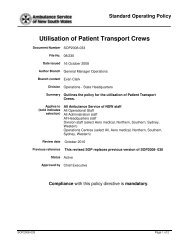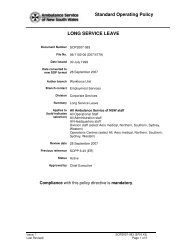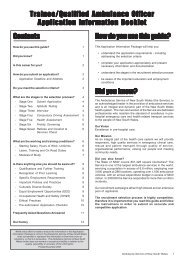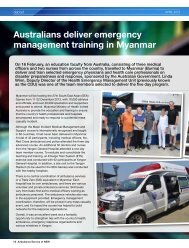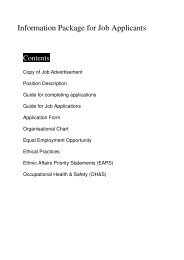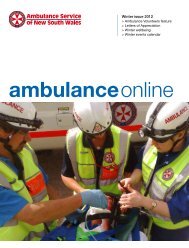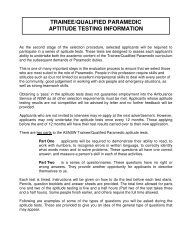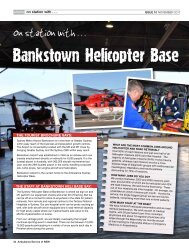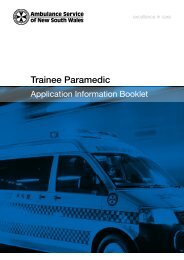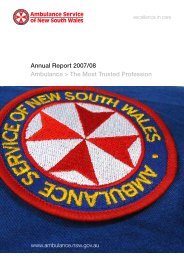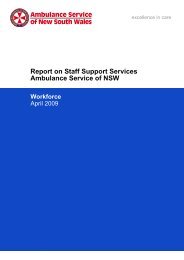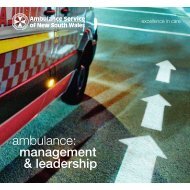atsb final report released 16 may 2013 - Ambulance Service of NSW
atsb final report released 16 may 2013 - Ambulance Service of NSW
atsb final report released 16 may 2013 - Ambulance Service of NSW
You also want an ePaper? Increase the reach of your titles
YUMPU automatically turns print PDFs into web optimized ePapers that Google loves.
front right seat; an air crewman (ACM), who was seated in the front left seat; 5 and aSpecial Casualty Access Team (SCAT) (see the section titled <strong>Ambulance</strong> <strong>Service</strong> <strong>of</strong>New South Wales) duty paramedic and doctor, who were seated in the rear cabin.Based on the advised location <strong>of</strong> the beacon and the potential for difficult patientaccess, an additional SCAT support paramedic was also on board, and seated in therear cabin. Due to the additional weight <strong>of</strong> the support paramedic, the helicopterwas operated on the ground for 13 minutes in order to reduce the fuel load andensure the helicopter was below its maximum allowable weight prior to departure.The helicopter arrived at the advised beacon location at about 1735 and, shortlyafter, the crew identified a person at the top <strong>of</strong> the waterfall and a second,apparently injured person on a rock ledge near the bottom <strong>of</strong> the waterfall. The crewconducted an aerial reconnaissance <strong>of</strong> the area and assessed that, due to the terrainand vegetation, it would not be possible to winch personnel directly to the injuredcanyoner’s position and that a vertical winch retrieval would similarly not bepossible. The pilot elected to land and shut down the helicopter in a nearby stagingarea (Figure 2) while a plan was devised to access the patient.Figure 2: Operating areaSource: Google EarthThe plan for the recovery <strong>of</strong> the injured canyonerA plan was developed to winch the paramedics to the top <strong>of</strong> the waterfall, near theposition <strong>of</strong> the uninjured canyoner. The intention was that the duty paramedicwould then abseil down to assess the patient while the support paramedic remainedat the top <strong>of</strong> the waterfall. In addition to the rope used to abseil down to the patient,the plan involved the duty paramedic taking one end <strong>of</strong> a second, yellow rope(tag line) (see the section titled Role equipment) down with him, while the other end<strong>of</strong> the tag line remained with the support paramedic. The purpose <strong>of</strong> the tag line was5The ACM generally occupied the front left seat and relocated into the rear cabin when required tooperate the rescue winch.- 2 -



